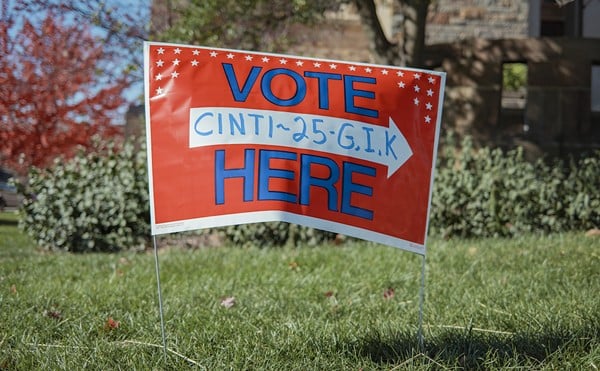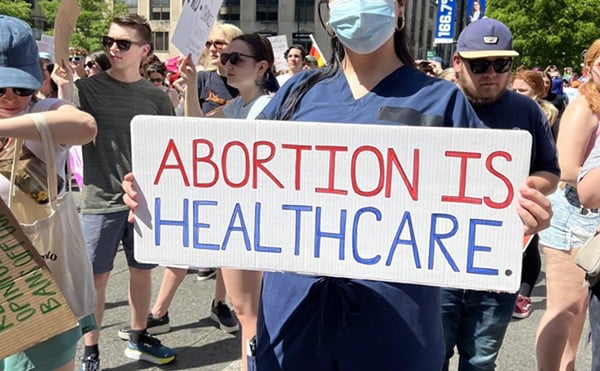Driving into work this morning on I-75 was, as usual, a breeze. Traffic moves quickly on the fairly short stretch of highway I use to get downtown, though I occasionally run into some stalls on the way home.
Of course, I've arranged my work schedule to avoid the heavy rush hours on either end of the workday. So it's a little perplexing to hear dire reports about the highway so choked and clogged it's earned a new permanent adjective: "snarled 75."
Yeah, I've found myself at the Lockland split or the I-275 interchange at 3 p.m. and crept along in first gear behind a minivan with Michigan plates. It's a sheer waste of life, and I can't imagine putting up with it on a regular basis.
So I don't.
Yet here we are facing demands that "something" be done to fix I-75, and after years of studies and meetings and public input sessions that "something" turns out to be adding another lane in each direction. For as much as $650 million, the bigwigs say. And it'll take years to finish.
We all know that it'll really cost $1 billion and take more like 20 years to build.
Twenty years! Twenty! How old will you be when I-75 is finished adding a lane in each direction through Hamilton County? And if 75 is supposedly already a living nightmare, what will it be like covered with orange barrels for the next 20 years?
And a billion dollars? For an extra lane of highway? An extra lane that will already be obsolete the minute it opens?
The utter lack of creativity or imagination here is staggering. It would almost be funny if there weren't so much taxpayer money at stake in addition to people's homes, neighborhoods and livelihoods.
In any road-widening scenario, the people who live along the I-75 corridor will be fucked. They (or their parents) got fucked 40 years ago when 75 was first built and destroyed whole communities (West End) or cut them into puzzle pieces (Lockland). And these are people already behind the eight ball because they live along the polluted Mill Creek.
This is a classic example of environmental racism and classism. Bureaucrats, once again, are doing the least amount of work possible to consider alternative approaches to complex problems and instead seek the easy way out by screwing over the lower middle class and the poor, especially minorities.
The West End, Camp Washington, Saint Bernard, Bond Hill, Carthage, Hartwell, Lockland and Lincoln Heights might as well bend over now. You've been used and discarded by The Man before, and it's about to happen again.
And for what exactly?
Traffic on I-75 basically falls into two camps — local people trying to move between the suburbs and the city and people trying to get through Cincinnati to/from anywhere between Canada and the Gulf of Mexico. Creative alternatives can chip away at each problem area.
Basically, you get rid of a good deal of the through traffic and then convert a good deal of the commuter traffic to non-auto travel. I haven't done a 100-page cost/benefit analysis on this plan, but it doesn't seem that difficult to wrap your head around.
In Portland, Ore., they completely removed a highway through downtown to open land to riverfront development and built one of the best-used light rail transit systems in the country. Yes, Portland might be the most overhyped place since the Emerald City, but this isn't fiction. They actually reinvented their city through innovative transportation ideas.
Greater Cincinnati dipped its toe in the creativity pool a while ago when, after an exhaustive study of I-75, a Ohio-Kentucky-Indiana Regional Council of Governments (OKI) committee voted 27-1 to recommend a solution combining expanded bus service and light rail with a slightly wider highway (see "The Anti-Rail Bogeymen Lose Their Teeth," issue of Oct 8-14, 2003).
Somewhere along the way, OKI and the Ohio Department of Transportation — surprise! — lost their nerve and focused on just the highway widening plan. And so today the only options left for local residents to consider are whether they want the extra lanes up their butts or down their throats.
How about diverting all through traffic — at least the heavy volume of trucks — off of 75 during the day? If sending traffic all the way around on I-275 is impractical given the added mileage, why not put the trucks on I-71? It's already four lanes in each direction for a portion of its route through Hamilton County, wouldn't add mileage to a trip through town and seemingly can handle extra traffic.
Oh, folks in Montgomery, Blue Ash and Hyde Park might complain? Ha, they have no pull around here!
Back on 75, when through traffic is reduced during the day, turn one of the three lanes into a bus- and carpool-only lane, speeding those people to their suburban destinations. Work with local businesses and schools to stagger job hours so everyone isn't going to work at 8:30 and home at 5.
And build a simple light rail system to get interested urban dwellers off the roads and into public transit. One line could go up along 75 as far as Sharonville, and another line could head through Xavier University, Hyde Park and Mariemont to serve the eastern corridor initiative being finalized by OKI.
In Portland, a well-planned light rail system has both attracted and benefited from infill development in the city, helping create a vibrant urban core that's a Mecca for those damned "creative class" types. Cincinnati and Hamilton County, hemorrhaging population every year, need all the development and people they can find.
If the suburban counties, including Northern Kentucky, don't want anything to do with light rail, screw 'em. Build a simple two-line system that serves the inner ring suburbs and promotes new housing and businesses along the routes, and then let 'em pay for their own extensions when the system is a resounding success.
Here's how the money works (non-bureaucrat version): If the 75 widening is going to cost $1 billion, take half of the money and upgrade 75 and 71 for the rerouted trucks and bus lanes; take the other half and build the light rail lines; and finish everything in 10 years, not 20.
One of the weaknesses that's plagued Greater Cincinnati is a lack of creativity and leadership in addressing serious community-wide issues. We've occasionally broken through the status quo wall to take risks — narrowing Fort Washington Way, using a new sales tax to fund stadium construction, passing a levy to remake every school in the city of Cincinnati.
But too often, like with I-75, we're not willing to use our imaginations and instead pave the road to Hell with an extra lane.





